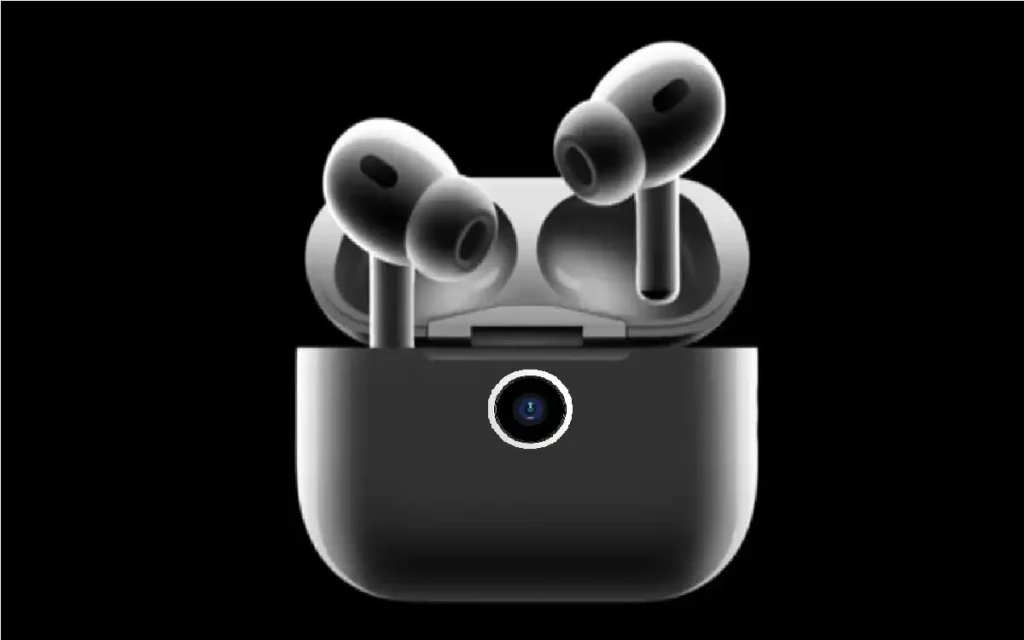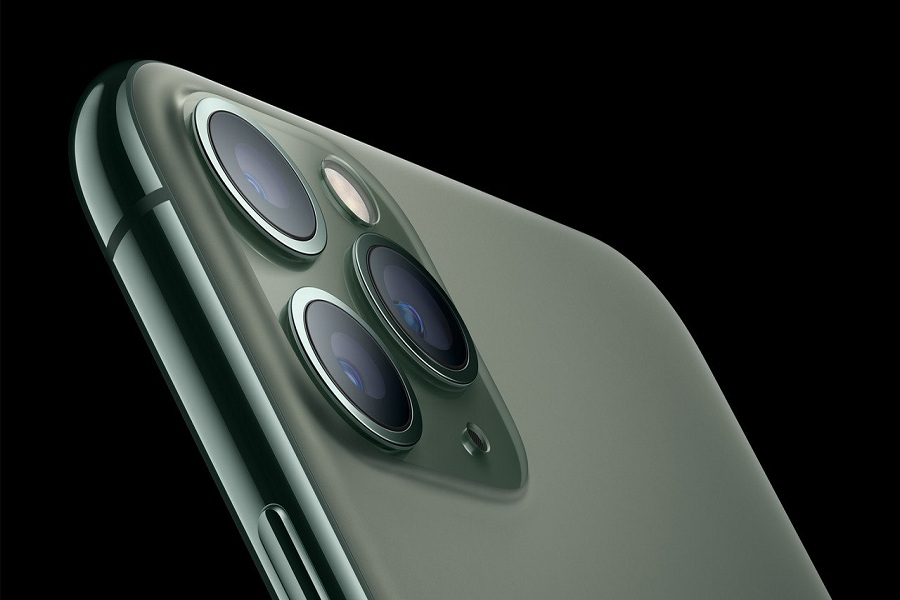As reported by Bloomberg’s Mark Gurman, involves the development of AirPods with Cameras built-in, slated for release in 2027. This innovative move signals Apple’s commitment to enhancing its augmented reality (AR) offerings and solidifying its position in the wearable tech market. Let’s discuss the details of this exciting development and explore its potential impact on the future of personal technology, such as AirPods with Cameras.
Recent Released: How To Download AppValley on iOS 15 & IOS 16 (2023)
The Dawn of a New Era in Wearable Tech
Apple’s decision to integrate cameras into its famous AirPods line is not just a minor upgrade; it’s a paradigm shift in how we interact with our devices and the world around us. This bold move is part of a broader strategy to expand Apple’s AR ecosystem beyond the Vision Pro headset, which has faced challenges due to its high price point and bulky design.
Key Features and Innovations
The proposed camera-equipped AirPods are expected to boast a range of cutting-edge features:
- Built-in Cameras: Outward-facing cameras will allow users to capture photos and videos hands-free, opening up new possibilities for content creation and real-time visual assistance.
- Visual Intelligence: Leveraging Apple’s advancements in visual intelligence technology, these AirPods could offer real-time object recognition and contextual information about the user’s surroundings.
- Enhanced Spatial Audio: Infrared (IR) cameras may improve spatial audio experiences by detecting environmental sounds and adjusting audio output accordingly.
- Seamless Integration: As with all Apple products, these new AirPods are expected to integrate smoothly with the existing Apple ecosystem, enhancing the overall user experience.
The Technological Be Surprised Behind the Scenes
Apple’s journey to create camera-equipped AirPods is a testament to the company’s commitment to innovation and overcoming technical challenges. Integrating cameras into such a small form factor presents unique design and engineering hurdles.

Miniaturization and Power Efficiency
One of Apple’s primary challenges is miniaturizing camera technology to fit within the compact AirPods design without compromising image quality or battery life. This requires significant advancements in camera sensor technology and power management systems.
Data Processing and Storage
With the ability to capture visual data comes the need for robust on-device processing capabilities. Apple will likely leverage its expertise in chip design to create custom processors capable of handling real-time image processing while maintaining energy efficiency.
Connectivity and Data Transfer
The addition of cameras will inevitably increase the amount of data AirPods need to transmit. It may necessitate improvements in Bluetooth technology or new wireless standards to ensure smooth, lag-free operation.
Potential Applications and Use Cases
Introducing cameras to AirPods opens up possibilities for personal and professional use. Here are some potential applications that could revolutionize how we interact with technology:
1. Enhanced Video Conferencing
Camera-equipped AirPods could transform the video conferencing experience by offering:
- Hands-free video calls with improved audio-visual synchronization
- Gesture-based controls for managing calls
- Immersive spatial audio that adapts to the user’s environment
2. Augmented Reality Experiences
While not offering full AR displays like smart glasses, these AirPods could still contribute to AR experiences by:
- Providing audio cues based on visual input
- Enhancing navigation with real-time object recognition
- Offering contextual information about the user’s surroundings
3. Personal Safety and Assistance
The combination of visual and audio capabilities could enhance personal safety:
- Real-time translation of visual text and signs
- Object recognition for visually impaired users
- Quick capture of important visual information in emergency situations
4. Fitness and Health Tracking
Visual data could complement existing health-tracking features:
- Analyzing user posture and form during workouts
- Providing visual feedback on exercise techniques
- Assisting in dietary tracking by recognizing food items
Privacy Concerns and Ethical Considerations
As with any technology that involves capturing personal data, the introduction of cameras to AirPods raises significant privacy concerns that Apple must address:
1. Surveillance Risks
The discreet nature of AirPods could lead to unintentional or unauthorized recording of individuals, raising concerns about constant surveillance.
2. Data Security
With the increase in personal data being captured and processed, ensuring robust security measures to protect against hacking and data breaches becomes paramount.
3. Consent and Social Norms
The introduction of wearable cameras may challenge existing social norms and raise questions about consent in public spaces.
4. Regulatory Compliance
Apple will need to navigate a complex landscape of privacy laws and regulations across different jurisdictions to ensure compliance.
Market Impact and Competition
The introduction of camera-equipped AirPods is poised to shake up the wearable tech market. Let’s examine how this move might affect Apple’s position and its competitors:
Apple’s Market Position
By integrating cameras into AirPods, Apple aims to:
- Strengthen its ecosystem of interconnected devices
- Differentiate its offerings in the crowded wireless earbud market
- Pave the way for future AR and mixed reality products
Competitive Landscape
Apple’s innovation is likely to spur competition, with other tech giants potentially following suit:
- Meta (formerly Facebook) may expand its smart glasses line to include similar audio-visual capabilities
- Google could revisit and improve upon its Google Glass concept
- Samsung and other smartphone manufacturers may explore integrating cameras into their wireless earbud offerings
Consumer Adoption and Challenges
While the concept of camera-equipped AirPods is innovative, consumer adoption may face several hurdles:
1. Price Point
Given the advanced technology involved, these new AirPods are likely to come with a premium price tag, which could limit initial adoption.
2. Privacy Concerns
Some consumers may be hesitant to adopt technology that could be perceived as invasive or raise privacy issues.
3. Cultural Acceptance
The social acceptability of wearing cameras in everyday situations may vary across different cultures and contexts.
4. Learning Curve
Users may need time to adapt to new interaction methods and understand the full potential of the device.
The Future of AirPods With Cameras Wearable Tech: A Comparative Look
To better understand where Apple’s camera-equipped AirPods fit in the wearable tech landscape, let’s compare them to existing and potential future devices:
| Feature | Apple AirPods with Cameras (2027) | Smart Glasses | Smartwatches | Traditional Wireless Earbuds |
| Visual Capture | Yes (Built-in cameras) | Yes (Most models) | Limited (Some models) | No |
| Audio Capabilities | High-quality audio | Variable | Limited | High-quality audio |
| AR Experience | Limited AR features | Full AR displays | Limited AR features | No AR features |
| Form Factor | Earbuds | Glasses | Watch | Earbuds |
| Privacy Concerns | High | High | Moderate | Low |
| Hands-free Operation | Yes | Partial | Partial | Yes |
| Battery Life | To be determined | Generally short | 1-2 days | 4-6 hours (20+ with case) |
| Market Readiness | In development | Available | Mature market | Mature market |
This comparison highlights the unique position that AirPods With Cameras could occupy in the market, combining the discreet form factor of earbuds with advanced visual capabilities typically associated with smart glasses.
Finally
Apple’s reported plans to release AirPods With Cameras built in by 2027 represent a bold step into the future of wearable technology. This innovation has the potential to redefine how we interact with our devices and the world around us, offering a unique blend of audio and visual capabilities in a familiar and widely adopted form factor.
While the technology promises exciting new possibilities in areas such as augmented reality, video conferencing, and personal assistance, it also brings significant challenges. Privacy concerns, technical hurdles, and questions of social acceptance will need to be carefully addressed as Apple moves forward with this innovative product.
As we look towards 2027 and beyond, it’s clear that the lines between our digital and physical worlds will continue to blur. Camera-equipped AirPods may be the next step in this evolution, offering users unprecedented access to information and interaction capabilities. However, the success of this technology will ultimately depend on Apple’s ability to balance innovation with privacy, usability, and ethical considerations.
In the coming years, we can expect further developments in this space, not only from Apple but also from competitors eager to stake their claim in the next generation of wearable tech. As consumers, we stand on the brink of a new era in personal technology—one that promises to be as transformative as it is controversial.
The journey to 2027 and the release of camera-equipped AirPods will undoubtedly be filled with twists and turns, technological breakthroughs, and perhaps a few setbacks. But one thing is sure: the future of wearable tech is bright and coming to an ear near you.






